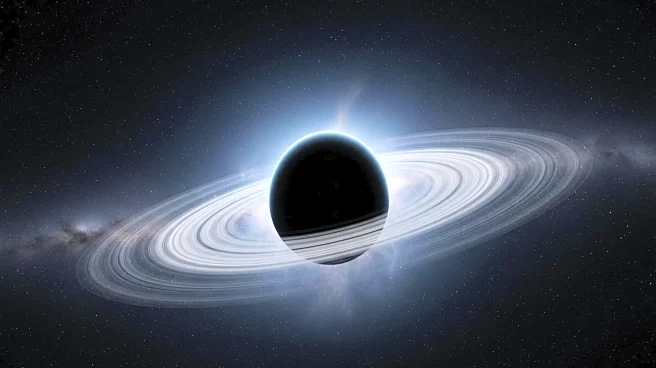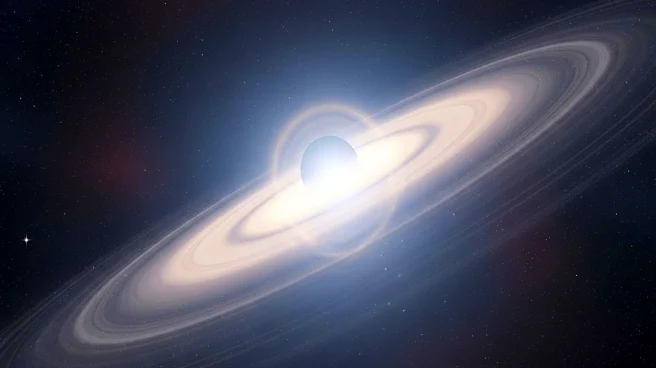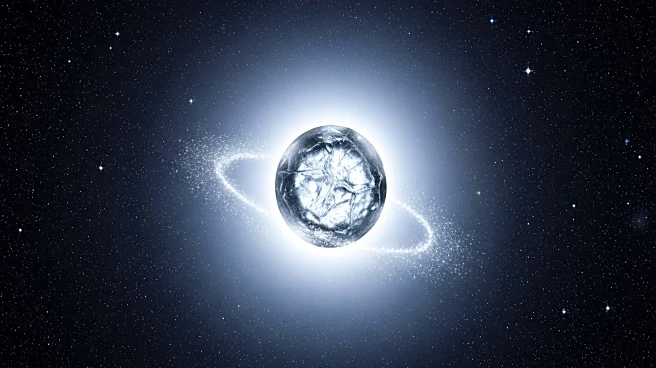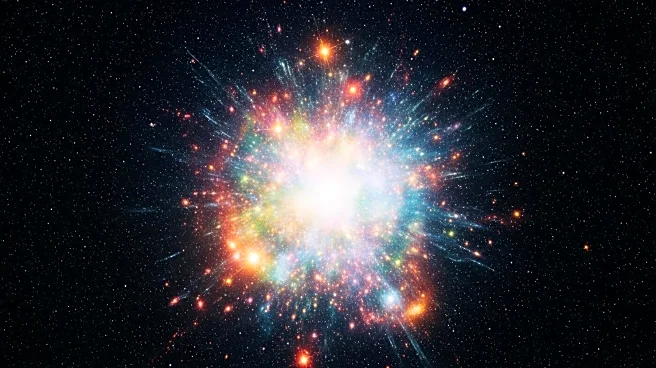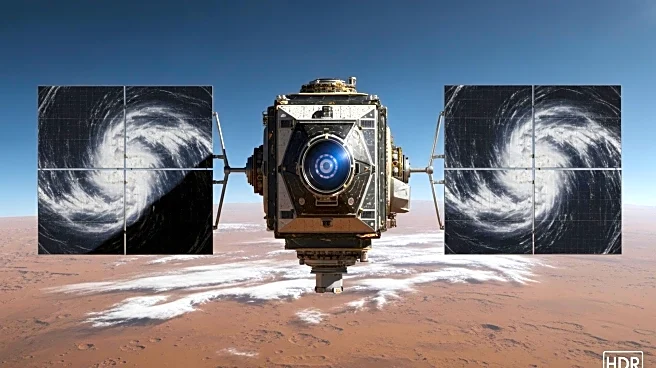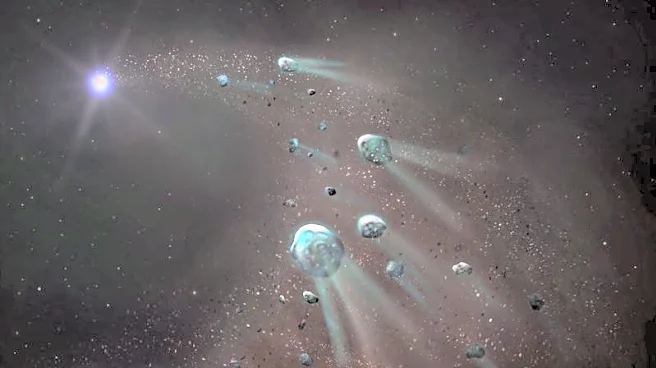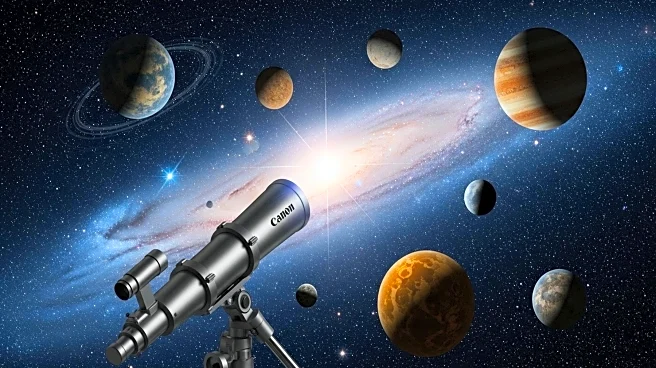What is the story about?
What's Happening?
Astronomers from the University of Warwick, along with European and U.S. colleagues, have identified a frozen, water-rich planetary fragment being consumed by a white dwarf star, WD 1647+375, outside our solar system. This discovery was made using ultraviolet spectroscopy from the Hubble Space Telescope, which revealed the presence of volatile elements such as carbon, nitrogen, sulfur, and oxygen in the star's atmosphere. The high nitrogen content, approximately 5%, and the significant oxygen levels suggest the presence of an icy object similar to Kuiper Belt objects or Pluto-like bodies. This finding provides evidence that volatile-rich, potentially life-enabling bodies exist in planetary systems beyond our own.
Why It's Important?
The discovery of an icy planetesimal with high nitrogen content in a white dwarf's atmosphere is significant as it suggests the existence of volatile-rich bodies capable of delivering water and life ingredients in other planetary systems. This finding enhances our understanding of how life-supporting elements might be distributed across the universe. The presence of such bodies could imply that conditions favorable for life might be more common than previously thought. This research also highlights the importance of ultraviolet spectroscopy in detecting volatile elements, which could be crucial for future searches for life-building blocks around other stars.
What's Next?
Future research will likely focus on further analyzing the chemical composition of similar white dwarfs to understand the prevalence of volatile-rich bodies in other planetary systems. The use of ultraviolet spectroscopy will continue to be a vital tool in these investigations. Additionally, astronomers may explore whether the icy object originated within the planetary system of the white dwarf or if it was an interstellar comet captured from deep space. These studies could provide deeper insights into the processes that distribute life-enabling elements across the cosmos.
AI Generated Content
Do you find this article useful?


